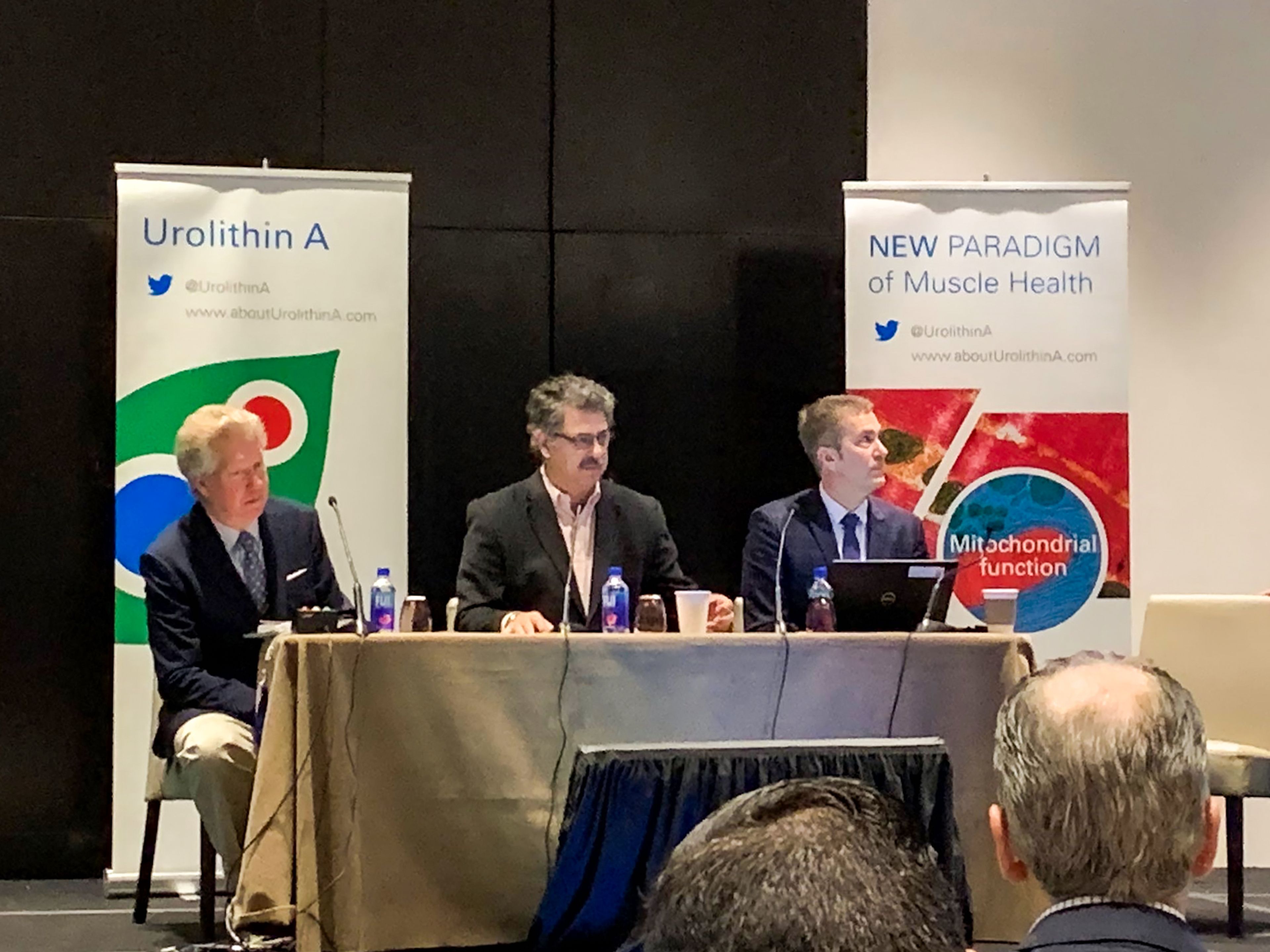What we learned about mitochondrial health at ICFSR 2019
The International Congress on Frailty and Sarcopenia Research (ICFSR) brings together leading clinicians and scientists working on muscle health.

Skeletal muscle’s role in health and disease is underappreciated. Traditionally, the focus has been on increasing muscle mass through exercise and protein intake. A new paradigm was presented at the leading congress on frailty and sarcopenia, ICFSR 2019: a shift to targeting the power generators within our cells inside of our muscles – mitochondria – as a mechanism to improve muscle health and function. In other words, a focus on improving not only the quantity of muscle but – perhaps even more importantly – its quality.
The International Congress on Frailty and Sarcopenia Research (ICFSR) is an annual event that brings together the biggest group of clinicians and scientists working on muscle health.
This comes at a time when the increase in the aging population has geriatricians and healthcare providers waking up to the burden of muscle health issues. Scientific evidence has built over the last decades around the role of mitochondrial health as one of the key biological pathways related to declining muscle health with age. Investing in muscle health is not only something for individuals at the age of retirement to be mindful about, however. People as young as 40 years old should already think about prevention, and how to keep their muscles healthy.

At a breakfast event hosted by Amazentis and moderated by Taylor Wallace, leading experts shared their insights: Roger Fielding (PhD, Director of the Exercise Physiology and Sarcopenia Laboratory and Professor of Nutrition and Medicine at Tufts University, Boston, USA), Jeremy Walston (MD, Professor of Geriatric Medicine at John Hopkins University and Principal Investigator of the JHU Claude D. Pepper Older Americans Center (OAIC)), and William J. Evans (PhD, Adjunct Professor in the geriatrics program at the Duke University Medical Centre and in the department of nutrition at the University of California, Berkley).
The future of treating muscle will be a combination of acting on muscle mass and improving skeletal muscle cell function, to enable the muscle to perform optimally. Approaches being considered today to impact muscle mass include both pharmacologic interventions, with selective androgen receptor modulators (SARMS), for example, as well as nutrition in the form of high protein supplementation. However, so far, the evidence is not that convincing with respect to improving muscle function employing these interventions.
As for cellular function, improving the mitochondrial health of our skeletal muscle cells will improve cellular energy levels and health and lead to better functioning cells, consequently improving overall muscle health. The strategy of tackling muscle mass and skeletal muscle cell health in parallel is emerging as the new paradigm to address this complex issue of age-associated muscle health decline.
What can already be said is that regular exercise, which is known to improve mitochondrial health, has an impact on muscle function. This holds true even in 90-year-olds[1], who will see muscle strength and mobility improved by undertaking aerobic exercise a few times a week. The challenge is that this is a lifestyle requirement, and the moment exercise is stopped, the effects gradually start to disappear.
Optimal nutrition, hand-in-hand with exercise, can play an invaluable role as well in maintaining healthy muscles. The future of nutrition will be personalization to address individual macro (e.g. proteins) and micro (e.g. vitamins, minerals) nutrition requirements. It will also focus on cellular nutrition, with nutrients that act at the cellular level to keep our cells healthier for longer. However, whether people can get the right levels of those nutrients from diet alone depends not only on the specific nutrient but also on the person’s gut microbiome composition.
A good example to illustrate this concept is the cellular nutrient Urolithin A, a naturally derived metabolite resulting from the action of gut microflora on precursor compounds (ellagitannins) found in pomegranate and other foods. Urolithin A is the first natural bioactive to improve mitochondrial function by activating mitophagy, a process by which aging and damaged mitochondria are cleared from the cell. Diet alone however may not be enough for people to reap the full benefits of Urolithin A. Scientists estimate that only ~30% of the population naturally converts ellagitannins in their diet into Urolithin A, and to varying degrees.[2]
Pre-clinical science and the clinical human evidence around Urolithin A show that it improves cellular health, and more specifically, mitochondrial health in skeletal muscle. Phase II clinical studies are in progress, and their results will be built around clinical endpoints such as endurance, exercise tolerance, and mitochondrial function.
The expert panel at ICFSR agreed that improving cellular health by increasing mitochondrial function is a promising approach for impacting muscle health and function. Furthermore, scientists and clinicians should start thinking about how combining approaches of increasing muscle mass and cellular function could be explored in the clinic as new avenues of managing muscle health during aging.
View the ICSFR presentation by Anurag Singh, MD, Ph.D., Amazentis: “Translating Urolithin A Benefits on Muscle Mitochondria into Humans”
References
- ↑
Fanning J., Rejeski WJ., Chen Sh., et al. A Case for Promoting Movement Medicine: Preventing Disability in the LIFE Randomized Controlled Trial. J. Gerontol. Series a. glz050, (2019)
- ↑
González-Barrio, Borges G., et al. Bioavailability of anthocyanins and ellagitannins following consumption of raspberries by healthy humans and subjects with an ileostomy. J Agric Food Chem. 2010 Apr 14; 58(7):3933-9

•
Nutrition•
Studies•
New Study: Mitopure Improves Muscle Health in Athletes

•
Nutrition•
Studies•







